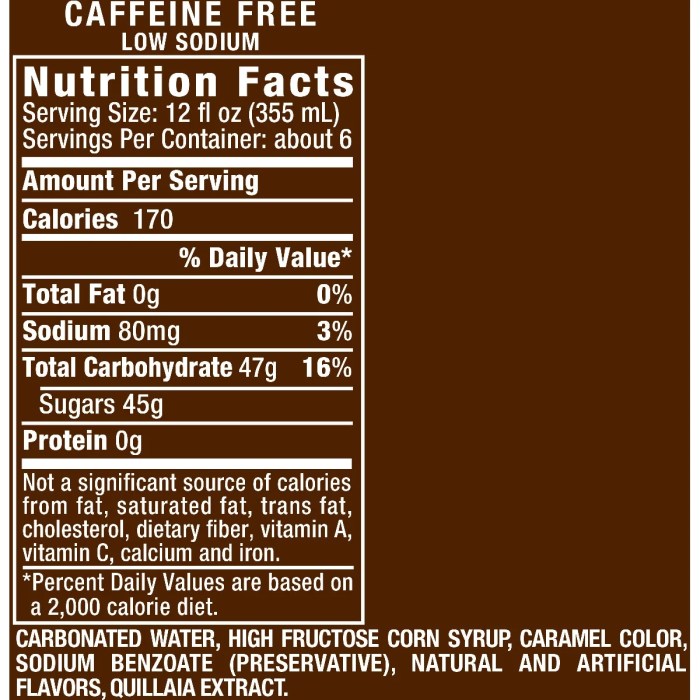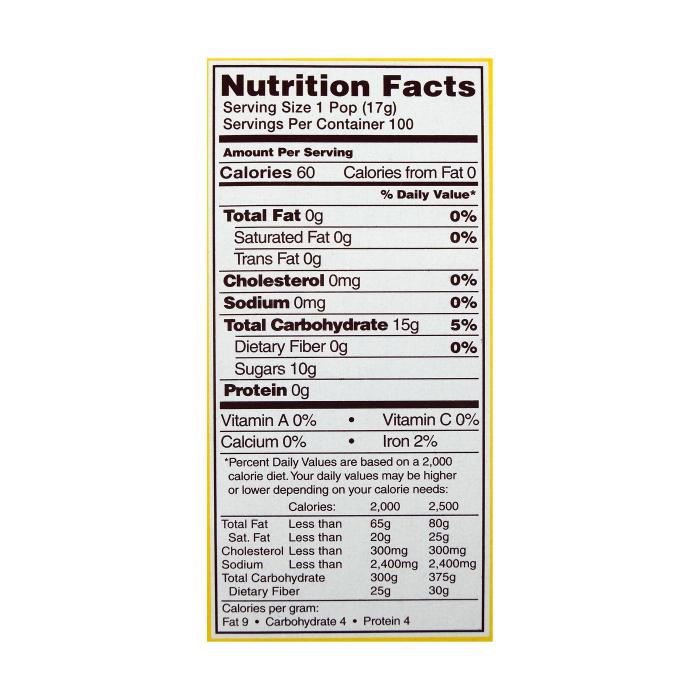Coors Light Nutritional Content

Coors light nutrition facts – Coors Light, a popular light beer, offers a relatively low-calorie and carbohydrate option compared to many other beers. Understanding its nutritional profile can be helpful for those monitoring their intake. This section provides a detailed breakdown of its nutritional content per serving and compares it to other light beer brands.
Coors Light Nutritional Information Per Serving
The following table displays the nutritional information for a 12-ounce serving of Coors Light. Note that these values may vary slightly depending on the source and manufacturing process.
| Nutrient | Amount per 12 oz Serving |
|---|---|
| Calories | 102 |
| Carbohydrates (grams) | 5 |
| Protein (grams) | 1 |
| Fat (grams) | 0 |
Comparison with Other Light Beers
Understanding how Coors Light’s nutritional profile stacks up against competitors is valuable for consumers making informed choices. The following bullet points compare Coors Light to three other popular light beer brands. Note that nutritional values can vary slightly depending on the source and specific product variations.
The following comparison highlights key differences in calorie and carbohydrate content. It’s important to always check the individual product labels for the most accurate and up-to-date information.
- Bud Light: Generally similar in calorie and carbohydrate content to Coors Light, often falling within a few calories and grams of carbohydrates of each other.
- Miller Lite: Also comparable to Coors Light in terms of calories and carbohydrates, typically within a small margin of difference.
- Michelob Ultra: Often marketed as a lower-calorie and lower-carbohydrate option compared to Coors Light, Bud Light, and Miller Lite. Expect a noticeably lower calorie and carbohydrate count.
Percentage of Daily Recommended Values
The following list shows the percentage of daily recommended values (%DV) for key nutrients in a single 12-ounce serving of Coors Light. Remember that %DV is based on a 2,000-calorie diet and individual needs may vary.
Understanding Coors Light nutrition facts is crucial for those watching their intake. A quick comparison to other breakfast cereals can be insightful; for example, checking the cheerios nutrition facts label highlights the significant difference in carbohydrate and fiber content. Returning to Coors Light, its low calorie count is a key selling point, but careful consideration of its other nutritional components remains important.
It’s crucial to remember that these percentages are for a single serving and should be considered within the context of an overall balanced diet.
- Calories: Approximately 5% of a 2000 calorie diet.
- Carbohydrates: A small percentage of the daily recommended intake, varying depending on individual needs.
- Protein: A negligible percentage of the daily recommended intake.
- Fat: 0% of the daily recommended intake.
Ingredients and Brewing Process

Coors Light’s refreshing taste and light body are the result of a carefully controlled brewing process and a selection of high-quality ingredients. Understanding these elements provides insight into the final nutritional profile of the beer. The simplicity of the ingredients contributes to the beer’s relatively low calorie and carbohydrate count.
The brewing process itself, while seemingly straightforward, involves precise steps and quality control measures that influence the final product’s characteristics, including its nutritional content. The unique aspects of Coors Light’s brewing contribute to its distinct flavor profile and light feel.
Ingredients Used in Coors Light Brewing
The ingredients used in Coors Light are relatively simple, contributing to its clean and crisp taste. This straightforward ingredient list is a key factor in the beer’s nutritional profile.
- Water: High-quality water is crucial for brewing, providing the base for the beer.
- Malted Barley: This provides the fermentable sugars that become alcohol.
- Hops: These contribute bitterness and aroma to the beer.
- Yeast: This microorganism ferments the sugars, converting them into alcohol and carbon dioxide.
Coors Light Brewing Process
The brewing process for Coors Light follows traditional methods but incorporates specific techniques that contribute to its light character. These steps, from malting to packaging, are crucial in determining the final nutritional composition.
- Malting: Barley grains are steeped in water to initiate germination, converting starches into fermentable sugars.
- Mashing: The malted barley is mixed with hot water to release the sugars.
- Lautering: The liquid (wort) is separated from the spent grain.
- Boiling: The wort is boiled with hops to add bitterness and aroma, sterilizing the mixture.
- Fermentation: Yeast is added to the cooled wort, converting sugars into alcohol and carbon dioxide.
- Cold Conditioning/Lagering: Coors Light undergoes a long cold conditioning process (lagering) at low temperatures, resulting in a smoother, cleaner taste and contributing to its crispness.
- Filtering: This removes any remaining yeast or other solids.
- Packaging: The finished beer is packaged into cans or bottles.
Impact of Brewing Process on Nutritional Content, Coors light nutrition facts
The brewing process significantly influences the final nutritional content of Coors Light. The specific techniques employed, particularly the cold conditioning and filtering, contribute to the beer’s relatively low calorie and carbohydrate count. The use of a specific yeast strain and the precise control of fermentation also play a role.
For example, the long cold conditioning (lagering) process allows for a more complete fermentation, potentially resulting in a lower residual sugar content compared to other brewing methods. The filtering process removes yeast and other solids, which would otherwise contribute to the calorie and carbohydrate count.
Serving Sizes and Consumption Advice: Coors Light Nutrition Facts

Understanding the serving size of Coors Light and practicing responsible consumption is crucial for enjoying the beverage safely and without negative health consequences. This section details recommended serving sizes and provides guidelines for mindful drinking.
Coors Light, like all alcoholic beverages, should be consumed responsibly. Overconsumption can lead to a range of negative health and social consequences. The following information aims to provide clarity on appropriate serving sizes and promote safe drinking practices.
Recommended Serving Size and Nutritional Information
Imagine a simple infographic. A single, standard 12-ounce (355ml) bottle of Coors Light is depicted centrally. To its right, a table clearly Artikels the nutritional information for this serving size, including calories, carbohydrates, protein, and alcohol content (as per the previously provided nutritional facts). The visual emphasizes that this 12-ounce bottle constitutes
-one* serving. The design is clean and easily readable, using clear fonts and a color scheme consistent with the Coors Light brand.
Guidelines for Responsible Alcohol Consumption
Responsible alcohol consumption is key to minimizing potential health risks and ensuring a positive drinking experience. The following guidelines, specifically relating to Coors Light consumption, should be followed:
- Pace Yourself: Avoid drinking too quickly. Allow time between drinks to assess your level of intoxication.
- Stay Hydrated: Alternate alcoholic beverages with water or other non-alcoholic drinks to prevent dehydration.
- Know Your Limits: Be aware of your personal tolerance to alcohol and avoid exceeding it. Factors such as body weight, gender, and overall health influence alcohol tolerance.
- Never Drink and Drive: Designate a driver or utilize alternative transportation methods, such as taxis or ride-sharing services, if you plan to consume alcohol.
- Avoid Consumption in Certain Situations: Refrain from drinking alcohol before or during activities requiring alertness and coordination, such as operating machinery or driving.
- Don’t Mix Alcohol with Medications: Consult a doctor or pharmacist if you are unsure about the interaction between alcohol and your medications.
- Be Mindful of Your Surroundings: Drink responsibly and in safe environments, avoiding situations that could lead to risky behavior.
Potential Consequences of Excessive Consumption
Excessive consumption of Coors Light, or any alcoholic beverage, can have serious consequences. These can range from short-term effects to long-term health problems.
Short-term effects can include impaired judgment, coordination problems, slowed reflexes, nausea, vomiting, and hangovers. In more severe cases, alcohol poisoning can occur, which is a medical emergency requiring immediate attention. Long-term excessive alcohol consumption can lead to liver disease (cirrhosis), heart problems, certain types of cancer, and mental health issues. Furthermore, excessive alcohol use can negatively impact relationships, employment, and overall quality of life.
For example, a study published in the
-Journal of the American Medical Association* highlighted a strong correlation between heavy alcohol consumption and an increased risk of several cancers.
Questions Often Asked
Is Coors Light gluten-free?
No, Coors Light contains gluten, as it is made from barley.
How many carbs are in a 12-ounce Coors Light?
A 12-ounce serving typically contains around 5 grams of carbohydrates.
Does Coors Light contain any artificial sweeteners?
No, Coors Light does not typically contain artificial sweeteners.
Can I drink Coors Light if I’m on a low-calorie diet?
While Coors Light is a light beer, it still contains calories. Consider its caloric content within your overall dietary plan.
What are the long-term health risks of drinking Coors Light regularly?
Regular consumption of alcohol, including Coors Light, can increase the risk of various health problems including liver damage, certain cancers, and heart disease. Moderation is key.


